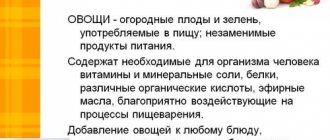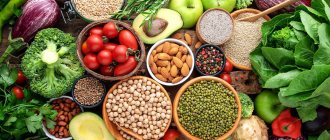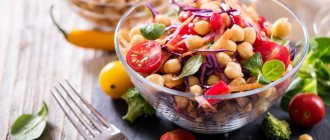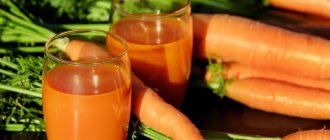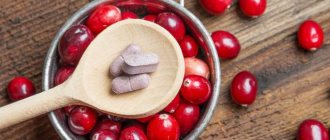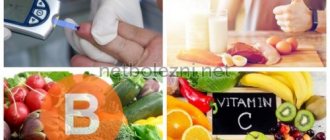Interesting Facts
A new look at the connection between nutrition and health was proposed by the American physician Dr. P. J. D'Adamo, who put forward a completely new and revolutionary theory of nutrition. It is based on the correlation of food composition to individual blood groups. Basically, it is based on the individuality of each person, manifested, among other things, by attitude to nutrition and genetically determined congenital factors.
P. D'Adamo
P. J. D'Adamo continued his father's research, based on the proven fact that each blood type arose during a separate period of human development. Therefore, it can be assumed that it carries genetic information about the lifestyle and living conditions of that period. In their study, Dr. D'Adamo and his colleagues looked at hundreds of staple foods to find out how they stack up against red blood cells in particular.
The scientific basis for this nutritional principle
Modern research has demonstrated that carriers of certain blood types may have an increased or decreased risk of certain diseases. But there are no studies showing that diet influences these risks. A large-scale review study (Journal of Clinical Nutrition, Volume 98, Issue 1, July 1, 2013) that examined thousands of expert articles found no sufficiently robust work to support the dietary requirements proposed by Dr. D'Adamo . The result of the study was the statement that there was no evidence to support his theory. One of the works that found some connection even contradicts the recommendations of the author of the blood group diet.
General Information and Research
It’s worth clarifying right away that many scientists are skeptical about this topic. They say that blood type has nothing to do with nutrition, but depends only on a specific set of proteins and carbohydrates that make up the membranes of red blood cells.
Existing scientific research cannot yet confirm the effectiveness of this D'Adamo nutrition system.
In one large study , 1,455 adults ate according to the recommendations for blood type 1, and it actually had a positive effect on their health. But this effect was observed in people with all blood types, not just the first.
The improvement in health was likely due to the fact that the participants simply began to eat healthier foods than before. After all, regardless of blood type, the D'Adamo method emphasizes natural and healthy foods, as opposed to the so-called “Western diet” consisting of refined sugar, fast food and trans fats.
Another large-scale review study from 2013 also did not confirm the effectiveness of this nutrition system.
But there are scientists, and even documented studies, that confirm that the diet should still be adjusted depending on the blood type. Although the reliability of these studies raises questions.
However, one of these studies was conducted by Peter D'Adamo (and the basis for his research was laid by his father, James D'Adamo). According to his theory, blood type affects how the body and all its cells interact with lecithins - one of the most important elements of every person's metabolism.
And based on his research, Peter even published a book back in 1997 (but an updated edition is published almost every year). Moreover, Dr. D'Adamo opened a clinic where he treats diseases of the digestive system, including helping patients select the optimal diet based on their blood type.
And although the World Health Organization (WHO) does not recognize the reliability of the stated theories, no one has yet been able to refute them either .
According to research by Peter D'Adamo, the Rh factor in no way affects the optimal diet. Accordingly, this factor can be ignored when preparing a diet.
At the same time, Peter compiled a list of “universal” rules that everyone should adhere to, regardless of their blood type:
- There are sea fish . It is also a source of essential amino acids, and is also easily absorbed by the body (even easier than chicken breast, which contains practically no fat).
- Avoid dairy products . Peter argues that domesticated animals and artificial food for them completely eliminate the benefits of such products. That is, dairy products are still useful, but only if they are obtained from wild animals, which is practically impossible in modern realities.
- If possible, minimize the consumption of cereals and products derived from them. This includes bread, oatmeal, and flour in any form (flour). Firstly, such products provoke a sharp increase in the level of carbohydrates in the blood, and secondly, they contain gluten - all this comprehensively disrupts the functioning of the digestive system.
- Avoid black tea and coffee in favor of green tea , since it contains virtually no caffeine, but the concentration of antioxidants is almost the same.
But you should still consult with a qualified nutritionist before following such rules.
How and why does it work?
The principle is very simple. According to experts and doctors, every person's immune system is able to detect whether a substance is negative or positive for the body. But for this identification, the body uses not one method, but several.
One of them is identification through chemical substances, antigens. They are present in the cells of absolutely all organisms, and one of their types is responsible for recognizing blood groups, each of which is distinguished by precisely this antigen and a different chemical structure.
How does this relate to nutrition? When the immune system detects a foreign antigen entering the body, it immediately creates antibodies to destroy it. It has been discovered that different foods contain different antigens that react negatively only with certain blood types. Therefore, what is suitable for one person may not be suitable for another.
Note for people with blood type 2+
Dairy products in the body of a person with this blood type provoke insulin reactions, which slow down the necessary metabolism and undermine the functioning of the heart.
Abuse of wheat and products containing it leads to excess acidity in muscle tissue.
Abstinence from meat ensures stable normal weight or its reduction. Meat for people with this blood type reduces the metabolic rate and promotes the accumulation of fatty deposits in the body. A vegetarian diet strengthens the body's defenses to fight infections.
Healthy foods:
- Vegetables and fruits;
- Cereals;
- Soy products;
- Pineapples;
- Vegetable oils;
- Legumes;
- Pumpkin seeds, sunflower seeds;
- Walnuts, almonds;
- Brown algae;
- Spinach;
- Broccoli;
- Coffee;
- Green tea;
- Red wine;
- Low-fat cheese and cottage cheese;
- Onion garlic.
Photo Pixabay
Harmful foods:
- Cabbage;
- Black tea;
- Carbonated soda drinks;
- Orange juice;
- Seafood;
- Meat;
- Papaya;
- Rhubarb;
- Bananas, coconuts, tangerines, oranges;
- Halibut, flounder, herring;
- Dairy products;
- Sugar (limited);
- Ice cream;
- Mayonnaise.
What do representatives of this group “like” in nutrition?
Representatives of group 2 with positive Rh (A Rh+) are the first vegetarians with a sensitive digestive tract, a stable immune system, good adaptation to new foods and environmental changes.
According to historical data, this blood type originated in Asia or the Middle East 25,000-15,000 years ago due to mutations in blood group 0 (1st). This was a reaction to changes in the environment associated with the transition to a culture based on agriculture and the domestication of animals.
For A Rh+ members, Dr. D'Adamo recommends vegetarian foods, preferably in their natural state, organically grown. Foods that promote weight loss include vegetable oils, soybeans, and pineapples, among others.
What you shouldn't eat
The following ingredients are included in the list of undesirable products:
- Meat. Food of animal origin is difficult to digest by the digestive system of the second group. If you can’t live without meat, cook dietary poultry, such as chicken or turkey. You will have to forget about pork, veal and other “heavy” foods when losing weight.
- Dairy products. You should not lean on milk and all kinds of fermented milk drinks. Such nutrition will not cause harm, however, it will significantly slow down the process of weight loss.
- Sugar and sweets. Try to minimize the amount of glucose in your diet. If you feel depressed without sweets, replace sweets with a teaspoon of honey.
- Seafood. Products that are not entirely suitable for a “herbal” diet.
Permitted and prohibited products: table
Extracts of the studied food precipitated erythrocytes of individual blood groups. In accordance with these reactions, nutrition for positive blood group 2 (table below) is based on suitable and unsuitable foods.
| Suitable | Allowed in small quantities | Unsuitable | ||
| Product | cal/100 g | Product | kcal/100 g | |
| Fish with dark meat (perch, cod, mackerel) | 80-100 | Olive and linseed oil | 810 | Meat from large animals |
| Garlic | 149 | Fermented dairy products | 70 | White meat fish (e.g. flounder) |
| Bird | 100-200 | Sugar | 400 | Whole milk |
| Green beans | 36 | Chocolate | 570 | Dairy products (except fermented) |
| Soybeans and products made from them | 280 | Molasses | 300 | Corn sprout oil |
| Lentils | 90 | Eggs | 40 | Beans |
| Peanut | 620 | Wheat products | 400 | Butter |
| Grapefruit | 41 | Seaweed extract | 84 | Melon |
| Green onions | 40 | Corn | 86 | White cabbage |
| Carrot | 42 | Rice | 120 | Sweet potato |
| Kohlrabi | 31 | Pepper | ||
| wheat germ | 90 | Potato | ||
| Broccoli | 33 | Banana | ||
| Spinach | 32 | Mango | ||
| Blackberry | 30 | Papaya | ||
| Plums | 59 | Orange | ||
| Apricots | 48 | Vinegar | ||
| Figs | 150 | Ketchup | ||
| A pineapple | 46 | |||
| Lemon | 30 | |||
Detailed tables detailing prohibited and permitted foods for blood group 2:
Drinking regime
For people with positive blood type 2, herbal teas and herbal stimulating drinks are suitable. Recommended:
- aloe;
- echinacea;
- alfalfa;
- burdock;
- hawthorn.
Good juices from the above types of fruits, red wine (no more than 1 glass daily), coffee, green tea.
Avoid:
- black tea;
- beer;
- lemonades;
- mineral waters;
- strong alcoholic drinks.
The essence
According to the international ABO system, blood is divided into groups according to the type of antigens found on the surface of its red blood cells. There are four of them:
- O (I) - there are no antigens in it;
- A (II) - contains antigen A;
- B (III) - contains antigen B;
- AB (IV) contains both antigens.
According to D'Adamo's theory, the human body better absorbs food that was consumed by his ancestors with the same blood type, since other types of foods can cause agglutination (sticking together) of red blood cells. The first owners of A (II) blood, according to the naturopath, were people living in the era of agriculture. They had a tolerant digestive system, good immunity, and their weak point was the cardiovascular system. “Farmers” benefit from eating vegetables, fruits, some (but not all) cereals, and almost any seafood. The table of recommended and prohibited foods for the second blood group is as follows:
| Allowed | Prohibited |
| Can be consumed in any quantity: | pork, beef, lamb, duck, goose |
| vegetables (any except white cabbage) | sausages and smoked meats |
| fruits (pineapple, plum, apricot, grapefruit, fig) | herring, flounder, halibut, fish roe |
| low gluten grains (rice, corn) | wheat dishes |
| soybeans | potato |
| peas, white beans | mushrooms |
| peanuts, pumpkin seeds, nuts, poppy seeds | tomatoes |
| sea and river fish (any except particularly fatty species) | eggplant, pepper |
| vegetable oils (any types) | Red beans |
| coffee, green tea | bananas, oranges, tangerines |
| red wine | spicy seasonings |
| Recommended for consumption in limited quantities: | sugar |
| chicken, rabbit and turkey meat | Black tea |
| eggs | carbonated drinks |
| cottage cheese, goat cheese, feta cheese, processed cheese | strong alcohol |
| honey | |
| fermented milk drinks |
Important! All diets for weight loss should be combined with physical activity. Swimming, walking, yoga and morning exercises are useful for people with blood type II. Strength sports are not recommended.
Nutritional features for children, the elderly, pregnant women
Although the assumptions and research results regarding the diet plan for people with A Rh+ are not scientifically based or proven, it is very popular. Maybe the reason for this is the “expert” sound of the name. But searching for a miraculous method of losing weight and improving your health is akin to searching for the holy grail or elixir of youth.
Due to sufficient diversity and relative balance, P. D'Adamo's nutritional principle is not contraindicated for children, the elderly, and pregnant women. It is important to simply find “your” products.
Diet rules
This group of blood fluid arose when people began to actively engage in farming. Their diet consisted mainly of plant foods. This nutrition influenced the composition of the current diet.
Individuals with A+ easily adapt to changes in diet. Such people need natural ingredients without harmful additives. Vegetarians can achieve effective results. There are other important dietary rules:
- Eliminate dairy from the diet. It slows down metabolism and has a bad effect on the functioning of the heart.
- Be sure to include foods with a minimum amount of fat .
- Meat is a very high-calorie product; if consumed constantly, especially after 40 years, it can lead to fat deposits. You should give it up during the diet. Abstinence from meat products ensures weight loss.
- It is necessary to monitor your daily calorie intake . It should be no more than 2000-2200 kcal. In the first week, it is optimal to consume 1500-1800 kcal.
- It is recommended to eat five times a day .
- During the diet, it is worth taking vitamin and mineral complexes . You need to drink herbal infusions.
- It is important to maintain moderate physical activity . It is useful to do dancing and yoga.
The diet according to the second positive group has practically no contraindications. The only condition is individual tolerance of the permitted products.
In case of certain diseases, allergic reactions or individual intolerances, it is prohibited to include certain foods in your diet. If you have chronic pathologies, you should consult a professional nutritionist, especially for digestive disorders. The diet should be used with caution in elderly people and pregnant women.
Quitting the diet
All diets have one thing in common – short duration. In a sense they are extreme. They cannot be followed for a long time. A person begins certain restrictions in the hope of improving his figure in a month.
But going back to regular food is the worst idea. If you really succeed in losing weight, returning to your previous diet is a guarantee of the “yo-yo” effect. Therefore, nutrition for weight loss involves adjusting your diet once and for all. Those. It's about consistent compliance with dietary rules.
Criticism of the "blood" diet
In his book, Peter D'Adamo makes many anecdotal arguments from a scientific point of view:
- For example, he refers to traditionally low stomach acid in people with the second group. This is not always true, especially if a person has gastrointestinal diseases.
- It is also not very clear why seafood in this diet is included in the group of harmful ones, while marine varieties of fish belong to the healthy category. Shellfish, squid and other sea “reptiles” are rich in iodine and zinc, which modern people lack so much.
- Finally, the desire to use such a diet during a training cycle will dramatically slow down progress:
- First, you will have to give up almost any supplement with protein shakes. They consist of 95% whey, which is not recommended for consumption. Allowed soy protein does not contain all the amino acids, and high-quality egg albumin will still have to be sought after.
- Secondly, animal fats are necessary for a number of metabolic processes. They play an important role in the formation of the immune system and the synthesis of testosterone. Limiting them reduces the anabolic background of the body, making it more difficult to gain muscle mass.
Advantages and disadvantages
Benefits of the food plan:
- If the diet contains your favorite foods, the diet will be enjoyable.
- An opportunity to think about the food you consume in general.
Flaws:
- Based on unproven assumptions.
- The menu may be missing some important nutrients. Especially if you compile it yourself, without knowledge of the principles of a rational diet.
- Some allowed vs prohibited foods are controversial.
Facts and myths
The most common myths regarding the P. D'Adamo scheme.
Myth: Cereals and muesli for breakfast are what you need.
All dehydrated foods should be avoided in the diet regimen. To lose weight, you need to increase your intake of foods high in water. It provides food with juiciness and volume, as a result of which a person gets full much faster.
Myth: Light products help you lose weight
The “light” designation on the product packaging indicates that it has a lower energy value, mainly achieved by reducing the fat content. Light foods marketed as 0% fat often contain other ingredients that increase energy intake.
Myth: Fruits are healthy, so they can be consumed unlimitedly.
Fruits are sources of vitamins, minerals, other important substances, soluble and insoluble fiber. Everyone knows that they need to be consumed regularly. But with dietary restrictions in the diet, they should be present on the menu in reasonable quantities. In addition, suitable species must be given priority.
conclusions
The most important thing to remember is that weight loss can only be effective when it is comprehensive. Otherwise, the success achieved will be short-lived. Soon the lost kilograms will return in one and a half volumes.
What is included in comprehensive weight loss:
- Eat right;
- Introduce physical activity into your life;
- Get enough sleep;
- Always have a positive attitude towards life;
- Use traditional medicine - herbs and tinctures.
Video
Tips for improving results
Eating according to blood group 2 is not a diet as such. This is a healthy lifestyle. Once you begin to follow its principles, it is recommended to constantly adhere to them.
Weight loss doesn't have to be drastic. To start, simply reduce portions, choose foods carefully, but not at the expense of taste or variety. You can eliminate or replace some menu components.
Movement is also important. To maintain the effect on your figure and health, a daily one-hour walk is recommended.
Products that promote weight loss
Vegetable oils such as:
- extra virgin olive oil,
- rapeseed oil,
- linseed oil.
- Soy products.
Vitamins and supplements:
- calcium,
- iron,
- zinc,
- chromium,
- selenium,
- vitamins E, B, A, C.
Herbal infusions and nutritional supplements:
- hawthorn,
- echinacea,
- ginseng,
- astragalus,
- thistle,
- bifidobacteria to normalize the gastrointestinal tract.
Menu for the week: video recipes
The following menu example can be adjusted in accordance with personal preferences - otherwise, combine, exclude, add, replace products.
1 day:
- Breakfast: ham + vegetables + whole grain bread.
- Afternoon snack No. 1: chicken breast with butter.
- Lunch: trout, salad.
- Afternoon snack No. 2: ham.
- Dinner: smoked mackerel.
Day 2:
- Breakfast: ham, scrambled eggs.
- Afternoon snack No. 1: fish.
- Lunch: Grilled chicken strips.
- Afternoon snack No. 2: ham + vegetables.
- Dinner: Korean soy meat.
Day 3:
- Breakfast: fish pate, bread.
- Afternoon snack No. 1: ham + vegetables.
- Lunch: pork with curry.
- Afternoon snack No. 2: chicken.
- Dinner: turkey + rice.
Day 4:
- Breakfast: oatmeal with raisins, coffee.
- Snack #1: Greek yogurt.
- Lunch: carrot soup with chickpeas, whole grain bread.
- Afternoon snack No. 2: blueberries.
- Dinner: buckwheat with mushrooms, herbal tea.
Day 5:
- Breakfast: cucumber salad with egg, tea.
- Afternoon snack No. 1: plums.
- Lunch: steamed fish.
- Afternoon snack No. 2: prunes or nuts.
- Dinner: asparagus with tofu, herbal tea.
Day 6:
- Breakfast: vegetable salad.
- Afternoon snack No. 1: cottage cheese.
- Lunch: rice soup, whole grain bread.
- Afternoon snack No. 2: any suitable fruit.
- Dinner: fish, Brussels sprouts.
Day 7:
- Breakfast: oatmeal toast, coffee.
- Afternoon snack No. 1: grapefruit.
- Lunch: zucchini, sheep cheese.
- Afternoon snack No. 2: yogurt.
- Dinner: chicken, vegetable salad.
Sample diet menu for blood group 2 (for weight loss)
1
1st day
- Breakfast: buckwheat porridge with dried fruits; green tea
- Second breakfast: kefir
- Lunch: vegetarian soup, baked chicken, cucumber salad
- Afternoon snack: cherry juice
- Dinner: baked cod with onions, lettuce
2
2nd day
- Breakfast: oatmeal with raisins, black coffee
- Second breakfast: apple juice
- Lunch: borscht with chicken, 2 boiled eggs, cauliflower salad
- Afternoon snack: homemade cottage cheese with yogurt
- Dinner: boiled spotted beans, kale salad with flaxseed oil
3
3rd day
- Breakfast: two-egg omelet with soy milk, rosehip decoction
- Second breakfast: Tofu cheese, grated carrots
- Lunch: lentil soup, boiled chicken, cucumber and green pea salad with rapeseed oil
- Afternoon snack: pineapple juice
- Dinner: trout, mackerel or salmon baked with vegetables from the table, stewed pumpkin, rye bread
Historical reference
The popularity of American nutritionist Peter D'Adamo has skyrocketed in just a few years. This happened precisely thanks to his blood type nutrition system.
He was able to open his clinic in the city of Portsmouth to receive his patients, among whom were stars of cinema, television and show business. Among them were Demi Moore, Miranda Kerr, Oprah Winfrey, who still do not hide the fact that they adhered to nutrition according to the theory of this naturopathic doctor.
He believes that blood type is the most important sign of differences between people. It affects emotionality, the strength of the immune system and spirit, and the tendency to certain diseases. Therefore, you need to eat in accordance with the requirements.
What is your blood type?
According to D'Adamo, different blood types react differently to chemicals in food. The body reacts, which is responsible for further well-being. Lecithins have been identified as the main source of adverse reactions.
They are present both in the human body and in products and are building cells. The body's lecithin structure is often hostile to lecithins from foods. This leads to the development of diseases and poor health.
Price of food for a week
The cost of food given in the table is very approximate. It depends on the specific food consumed, its quantity, combinations and, of course, the place of purchase.
| Products | Cost per week, rub. |
| Fish: carp, salmon, mackerel, perch, trout, sardines | 500 |
| Milk, cheeses, eggs: soy milk, tofu | 300 |
| Oils and fats: flaxseed oil, olive oil | 400 |
| Nuts and seeds | 200 |
| Fruits: pineapples, cranberries, figs, lemons, plums, blueberries, greens, apricots, raisins | 300 |
| Vegetables: artichokes, broccoli, horseradish, garlic, carrots, pumpkin, leafy vegetables, spinach | 300 |
| Cereals and pasta: wheat, rye, oat, buckwheat, rye flour, rice | 200 |
| Legumes: red lentils | 100 |
| Additional expenses | 150 |
| Total | 2450 |
As you can see, products for positive blood group 2 will not cost more than your usual diet. Therefore, its compliance will not affect the budget.
What is included in the diet?
The blood type diet (2 positive) for weight loss involves eating only approved foods. The main principle of the method is the consumption of food of plant origin. Meat products contribute to faster accumulation of fat deposits.
The diet may contain white meat from turkey or chicken (the skin must first be removed). Sources of animal protein include soy products, fish and seafood. You can eat chicken or quail eggs no more than 1-2 times a week. Fish fillets go well with a side dish of cereals or vegetables.
It is not necessary to heat-treat vegetables. They, like fruits, are preferably consumed raw. The diet may contain seeds and nuts. The diet does not require a complete abstinence from alcoholic beverages (with the exception of strong alcohol).
List of approved products
The blood type diet (2 positive) for weight loss requires diet correction. The list of permitted products includes fish:
- fresh herring;
- salmon;
- trout;
- cod;
- mackerel;
- carp;
- zander.
The diet may contain vegetable oil (linseed or olive). The basis of the diet is vegetables:
- turnip;
- leek;
- watercress;
- onion;
- kohlrabi;
- broccoli;
- pumpkin;
- onion;
- beet;
- carrot;
- spinach.
The presence of fresh fruits in the diet is mandatory. During the diet you can eat:
- blueberries;
- figs;
- lemon;
- cranberries;
- blackberries;
- tangerines;
- grapefruits;
- pineapples;
- blueberries;
- lingonberries;
- cherry plum;
- cherry
The first and second courses are prepared with the addition of lentils, brown rice, soybeans, beans and buckwheat. During the diet, you can eat mushrooms (champignons or oyster mushrooms). Ready-made seasonings must be replaced with fresh herbs and herbs (parsnips, mustard, turmeric, paprika, dill).
Neutral products include:
- sweets (marshmallows, milk or white chocolate, milk jelly, preserves, jams, marmalade);
- spices (horseradish, vanillin, nutmeg, ground black pepper, cloves, coriander, bay leaf);
- wheat bread, rice or grain bread;
- products made from oatmeal or corn flour;
- fruits and berries (raspberries, gooseberries, kiwi, peach, pear, raisins, grapes, avocado, prunes, dried apricots);
- greens and vegetables (zucchini, cucumbers, celery, Brussels sprouts, cauliflower, white cabbage, radishes, asparagus);
- legumes (green beans, white beans, green peas);
- nuts and seeds (hazelnuts, almonds, walnuts and pine nuts, sunflower seeds);
- cereals (barley, corn, pearl barley, millet);
- vegetable oils (soybean, sunflower);
- dairy products (low-fat cottage cheese, goat milk, low-fat kefir, natural sour cream and yogurt, processed cheese);
- fish and seafood (smelt, cod liver, pike, seaweed, sturgeon, perch);
- meat (chicken, turkey).
The list of neutral products also includes chicken eggs.
List of prohibited products
The blood type diet (2 positive) for weight loss helps restore metabolic processes. To achieve a positive result, you need to adjust your usual diet.
It is necessary to exclude from it completely:
- meat and meat products (heart, lard, liver, veal, beef, pork, ham, rabbit, goose, duck, minced beef);
- fish and seafood (flounder, pickled, salted herring, smoked salmon, caviar, halibut, crayfish, crabs, squid);
- dairy products (butter, ice cream, cream, whole cow or goat milk);
- oils (coconut, corn, cottonseed);
- cereals (semolina, oatmeal, ready-made muesli);
- pasta and flour products (vermicelli, spaghetti, instant noodles, wheat flakes, crackers, grain bread);
- seasonings and sauces (tomato paste, mayonnaise, ketchup, black pepper);
- vegetables (rhubarb, potatoes, sweet and hot bell peppers, olives, cauliflower, white cabbage).
During the diet, it is not recommended to eat bananas, melons and exotic fruits (papaya, passion fruit, feijoa).
Drinking regime
Compliance with the drinking regime during the diet is a prerequisite. Experts recommend drinking liquid regularly, every hour. The emphasis should be on mineral still water. It can be considered a calorie-free alternative to tea or coffee.
Freshly squeezed juices can be included in the diet:
- carrot;
- plum;
- grapefruit;
- citric;
- pineapple;
- apricot;
- cherry;
- peach.
It is allowed to drink green and herbal tea (with rose hips, hawthorn, chamomile, valerian). You can drink quality red wine several times a week. Decoctions based on medicinal plants help restore metabolic processes in the body.
Herbal extracts contain a large amount of natural antioxidants that have a beneficial effect on the functioning of internal systems. Mineral still water promotes faster release of fat cells from the subcutaneous layer. During lipolysis, the liquid reacts with triglycerides, accelerating the formation of fatty acids and glycerol.
The drinking regime must be observed if a person has not stopped playing sports during the process of losing weight. The liquid ensures restoration of motor activity of joints and muscle fibers. Hydration helps minimize the risk of developing cramps and sore throat.
I have an opinion
Reviews about the diet for blood group 2 are very diverse. Many people find it very limited, while others follow it successfully for a long time.
I have been following this nutritional principle for several years. The result is excellent health.
Faith
An effective method of losing weight. I checked it personally.
Svetlana
I have blood type 2. I don't follow any restrictions. And there are no problems.
Anna
Foods that slow down the weight loss process
Each organism is individual. The same substances are easily absorbed by the body of some people and have a negative impact on the health of others. This is precisely the basis of naturopath D'Adamo's weight loss method.
The result of the diet depends on accelerated metabolism. There are a number of products that inhibit metabolism and the process of losing weight: diets -
- Whole grain bread contains large amounts of “bad” carbohydrates, which cause intense insulin production. High sugar disrupts the functioning of the adrenal glands, a metabolic regulator.
- Milk contains a complex carbohydrate - lactose. The substance disrupts the functioning of the gastrointestinal tract, which impairs the absorption of nutrients.
- Potatoes impair the functioning of the thyroid gland and liver.
- Bananas, melons.
- Pasta.
- Instant porridge.
Be sure to read: Raw food diet: where to start, weekly menu for weight loss with recipes
The list also includes flour, sausages, carbonated drinks and others.
How to consolidate results
For the blood type diet to be effective, it must become a lifestyle. She is not radical, i.e. will not ensure getting rid of tens of kilograms in the shortest possible time. But with long-term adherence, a suitable combination of foods and the absence of overeating, success is guaranteed. Optimal weight loss is 0.5-1 kg per week.
People's attitudes to P. D'Adamo's principle of nutrition are different. But everyone can try it. But don't be tempted to test antigens! Based on an assessment of the blood picture, neither a doctor nor another expert will identify intolerance to certain foods.

